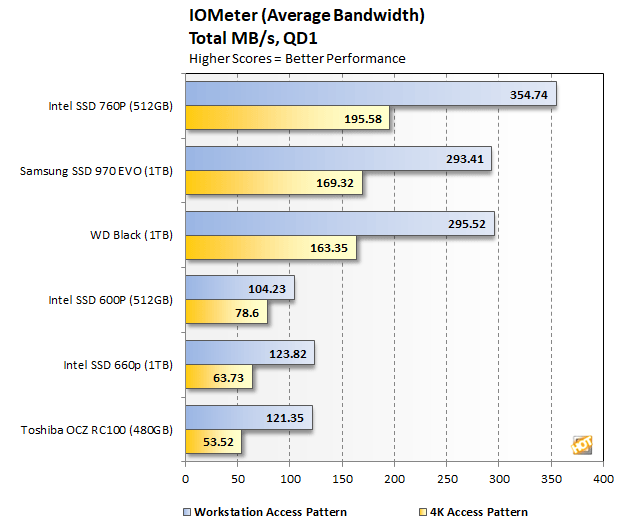Intel SSD 660p Review: Snappy NVMe Storage At Rock-Bottom Prices
Our Test Methods: Under each test condition, the SSDs tested here were installed as secondary volumes in our testbed, with a separate drive used for the OS and benchmark installations. Our testbed's motherboard was updated with the latest BIOS available at the time of publication and AHCI mode was enabled for the host drive.
The SSDs were secure erased prior to testing (when applicable), and left blank without partitions for some tests, while others required them to be partitioned and formatted, as is the case with the ATTO, PCMark, and CrystalDiskMark tests. Windows firewall, automatic updates, and screen savers were all disabled before testing and Windows 10 Quiet Hours were enabled. In all test runs, we rebooted the system, ensured all temp and prefetch data was purged, waited several minutes for drive activity to settle, and for the system to reach an idle state before invoking a test. Also note that all of the drives featured here were tested with their own NVMe drivers installed where possible / available.
|
| Processor - Motherboard - Video Card - Memory - Audio - Storage - |
Intel Core i7-8700K Gigabyte Z370 Ultra Gaming (Z370 Chipset, AHCI Enabled) Intel HD 630 16GB G.SKILL DDR4-2666 Integrated on board Corsair Force GT (OS Drive) Toshiba RC100 (240GB / 480GB) Intel SSD 660p (1TB) Intel SSD 760p (512GB) Intel SSD 600p (512GB) OCZ RD400 (1TB) WD Black NVMe (1TB) Samsung SSD 970 EVO (1TB) |
OS - Chipset Drivers - DirectX - Benchmarks - |
Windows 10 Pro x64 Intel 10.1.1.45, iRST 16.0.2.1086 DirectX 12 IOMeter 1.1 HD Tune v5.70 ATTO v3.05 AS SSD CrystalDiskMark v6.0.0 x64 PCMark Storage Bench 2.0 SiSoftware SANDRA |
|
In the following tables, we're showing two sets of access patterns; a custom Workstation pattern, with an 8K transfer size, consisting of 80% reads (20% writes) and 80% random (20% sequential) access and a 4K access pattern with a 4K transfer size, comprised of 67% reads (33% writes) and 100% random access. Queue depths from 1 to 32 were tested, though keep in mind, most consumer workloads usually reside at low queue depths...




|








